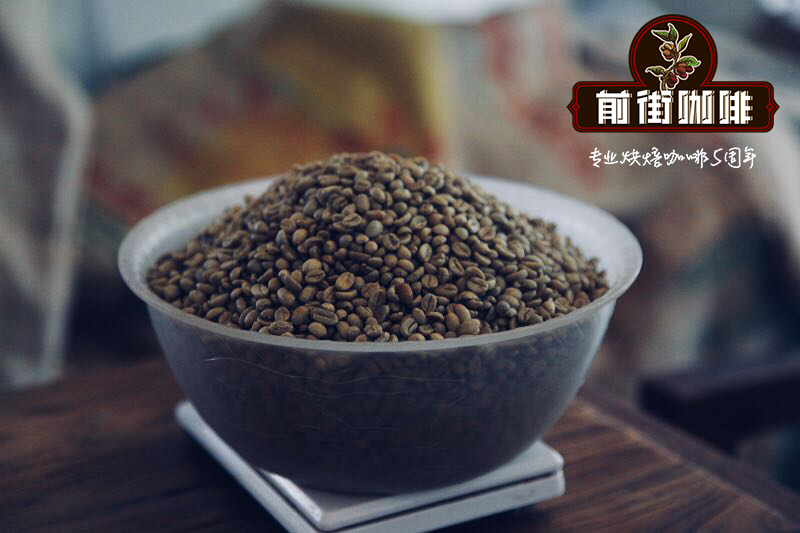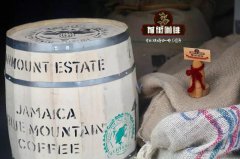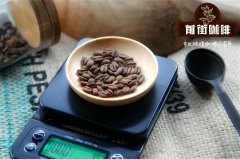There are more and more ways to deal with coffee beans, and now there is a new red wine barrel fermentation?

Professional coffee knowledge exchange more coffee bean information please follow the coffee workshop (Wechat official account cafe_style)
As more and more coffee is exposed to everyone, we have also witnessed the change in the way coffee is treated. From the beginning of water washing, sun exposure, to honey treatment, wet planing, to the red wine treatment, carbon dioxide impregnation, which is very popular in recent years. I believe you have heard of the traditional coffee-making process, and many processing plants use wine-making technology for reference in the process of dealing with raw coffee beans.
The treatment of red wine has once become a hot discussion in the industry. In the process of coffee fruit to raw coffee bean treatment, there will be more or less "fermentation", whether it is washing treatment, honey treatment, or sun treatment will undergo this chemical change process. Different substances involved in fermentation (coffee peel, coffee pulp, coffee pectin, species of bacteria, distribution of bacteria), different fermentation environment (water and water, oxygen and oxygen, PH environment, etc.), different drying process (container material, natural sun, drying equipment, turning times, etc.), resulting in different post-treatment flavor and taste.
Coffee treatment red wine treatment (also known as carbon dioxide treatment)
It can also be called red wine treatment, which is inspired by the brewing technology of red wine. At present, only eight estates in Colombia have successfully introduced coffee beans treated with this method to the market. According to the data of these eight estates, we can roughly divide the types of red wine treatment into: acetic acid fermentation (Aerobic aerobic fermentation), lactic acid fermentation (Anaerobuic anaerobic fermentation), mixed fermentation.
The traditional treatment method is difficult to control the changeable fermentation degree of coffee beans. But red wine treatment rules can ensure the quality of coffee beans by controlling PH value, even temperature and humidity, and airtight fermentation makes aroma less volatile.
Carbon dioxide impregnation is a new treatment method used in red wine treatment, in which the whole grape is put into carbon dioxide gas to make it oxygen-free. In this way, even in the absence of yeast, the grape fruit itself will convert its own sugar into alcohol, thus bringing a special aroma, the wine produced by this method has soft aroma, rich taste and stable color.
(comparison of the gap between three different treatment methods)
However, many special innovative treatment methods in the coffee industry, such as red wine treatment, refer to the principle of red wine fermentation treatment.
The specific process is as follows:
Coffee bean picking → is placed in a stainless steel sealed bucket → is injected into carbon dioxide to ferment → to control the type and number of bacteria fermented → fermentation is completed and the raw coffee beans are taken out.
(stainless steel wine fermentation barrel, similar principle of coffee wine treatment fermentation equipment)
Red wine treatment of coffee taste clean, acidity bright, but also very water-saving, for many producing areas of lack of water resources, the use of red wine treatment can greatly improve the quality of coffee. In 2015, sasa won the wbc championship with a red wine-treated coffee.
(the principle of red wine treatment is to use carbon dioxide instead of oxygen to ferment coffee in an oxygen-free environment.)
After introducing the red wine treatment, we will introduce a special treatment, biological treatment, also known as animal in vivo treatment. As we all know, Kopi Luwak is a well-known method of internal treatment in animals, but the animals that eat coffee are not only civets, but also Jacu birds, and elephants.
Next, let's talk about these three special treatments.
1) Jacu Bird shit Coffee
(Jacu bird that eats coffee fruit)
Jacu is a kind of bird living in South America, they like to eat coffee cherries very much, and specially fly to the top of coffee trees to eat the most ripe fruit, but due to the special digestive function of jacu birds, they can not digest the parchment layer of coffee, so the coffee beans pulled out after eating are not damaged and are still intact.
2) Kopi Luwak
Kopi Luwak is a kind of coffee that is often brought out to show that you are loving and politically correct. Many people may not have drunk Kopi Luwak, but they have always heard the stories about Kopi Luwak.
(poor civet)
Civet Coffee (Kopi Luwak), also known as Kopi Luwak, is made by the civet who eats the coffee fruit and discharges the beans intact. People extract the beans from its feces and process them. Produced in Indonesia, the coffee is currently one of the most expensive in the world, costing as much as a few hundred dollars per pound.
3) like shit coffee
After talking about the expensive Kopi Luwak, let's talk about a wonderful coffee, like shit coffee.
Elephant poop coffee, known as "black ivory" coffee beans, is "naturally extracted" by Asian elephants. The coffee fruit is enzymatic in the digestive process of the elephant stomach, which breaks down the protein in the coffee beans, so the taste of this elephant poop coffee is not bitter. With aromas of milk chocolate, nuts, red berries and a few spices.
However, since it takes about 33 kilograms of fresh coffee fruit to produce 1 kilogram of "elephant shit coffee", most of the coffee beans are chewed, broken or hidden in the grass eaten by elephants, which is difficult to extract from elephant droppings, so the price of elephant shit coffee is expensive. Shit-like coffee is twice as expensive as Kopi Luwak.
END
For more professional coffee exchanges, please scan the code and follow Wechat: qiannjie

Important Notice :
前街咖啡 FrontStreet Coffee has moved to new addredd:
FrontStreet Coffee Address: 315,Donghua East Road,GuangZhou
Tel:020 38364473
- Prev

What is coffee bean rum barrel fermentation? Does the coffee really have the flavor of rum?
Professional coffee knowledge exchange more coffee bean information please follow the coffee workshop (Wechat official account cafe_style) We have also found a good performance in Colombian handling, this time from the Colombian Fenka-San Jose Manor rum processing Castillo Naranja! Many coffee lovers have struggled with the flavor. How can I tell you the flavor?
- Next

How to choose a hand coffee pot? which kind of spout is better for the capacity of the hand coffee pot?
Professional coffee knowledge exchange more coffee bean information Please pay attention to the coffee workshop (Wechat official account cafe_style) the key points of the selection of hand-brewed coffee pots in so many different capacities, materials and other different characteristics of hand brewers, how to choose? The following will be for you to sort out a few points for attention when shopping, please measure it according to your preferences and needs. According to grade
Related
- Beginners will see the "Coffee pull flower" guide!
- What is the difference between ice blog purified milk and ordinary milk coffee?
- Why is the Philippines the largest producer of crops in Liberia?
- For coffee extraction, should the fine powder be retained?
- How does extracted espresso fill pressed powder? How much strength does it take to press the powder?
- How to make jasmine cold extract coffee? Is the jasmine + latte good?
- Will this little toy really make the coffee taste better? How does Lily Drip affect coffee extraction?
- Will the action of slapping the filter cup also affect coffee extraction?
- What's the difference between powder-to-water ratio and powder-to-liquid ratio?
- What is the Ethiopian local species? What does it have to do with Heirloom native species?

